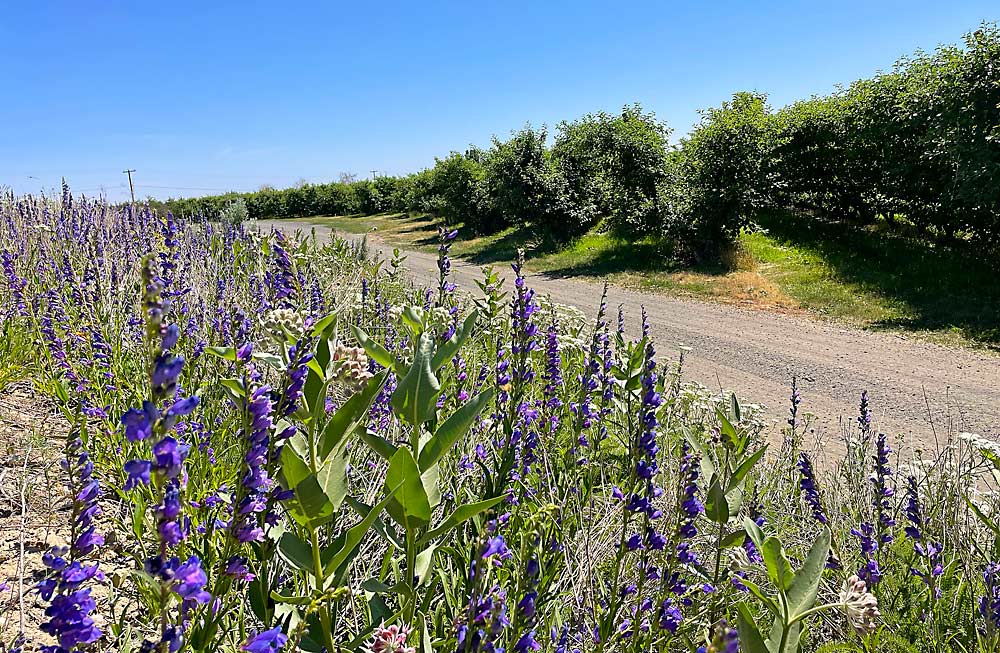
With the help of some flower-friendly fruit growers, Washington State University entomologists are studying the abundance and diversity of native pollinators near apple orchards.
Assistant professor Robert Orpet and doctoral student Mario Luppino collected data at six apple-adjacent flower plantings throughout the Columbia Basin to categorize and measure the insect populations they harbor.
The answer so far: A lot, and many of them bees.
Orpet’s three-year project, funded by a $250,000 Washington State Department of Agriculture Specialty Crop Block Grant, measures insects, including pollinators, but not tree fruit pollination directly. That would be almost impossible because growers place rented bee colonies in their blocks and haul them away after bloom. Then, they thin as part of crop load management.
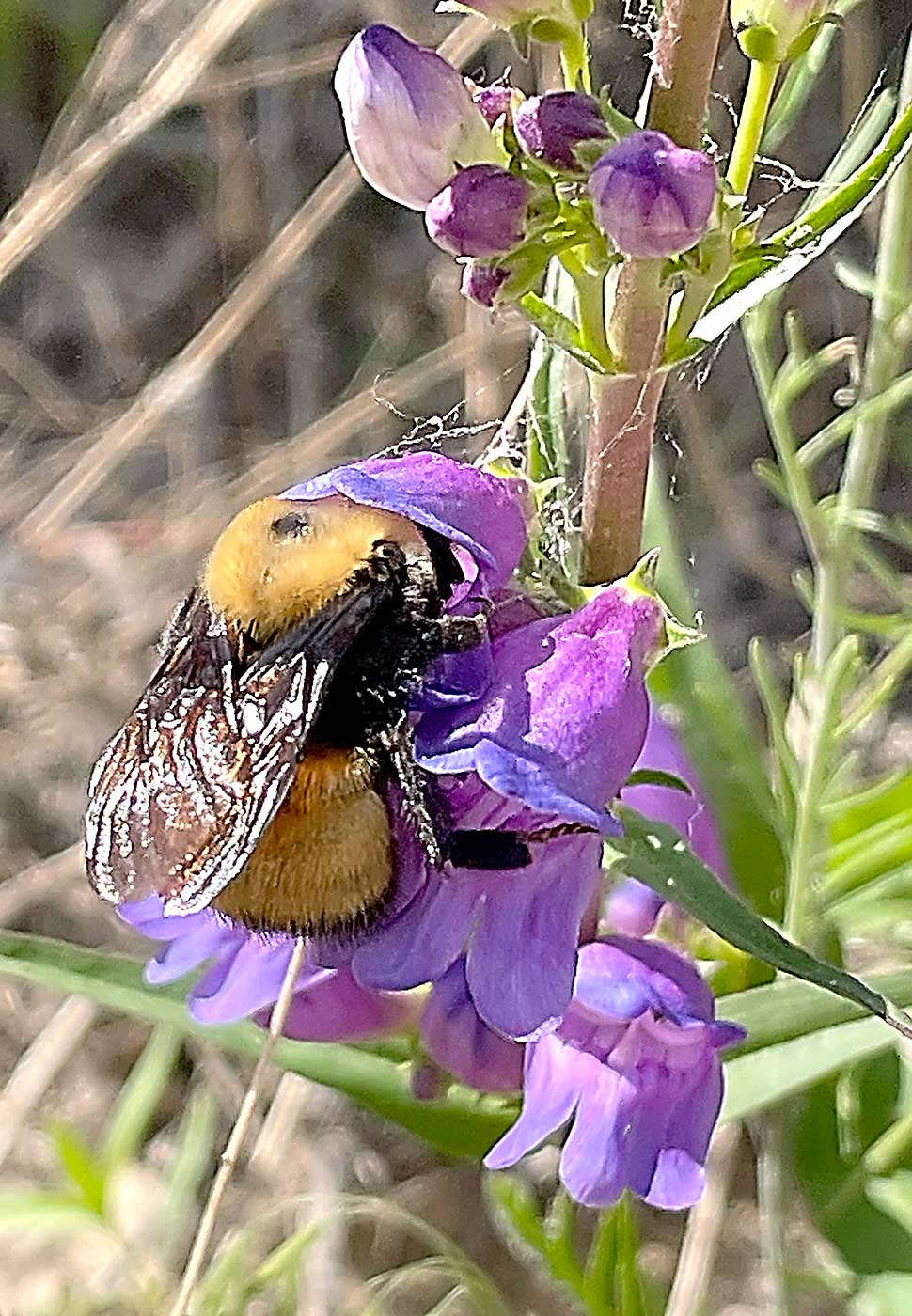
However, Orpet argues native pollinators living near apple orchards year-round likely would help growers by visiting the orchard each spring and augmenting the work of honey bees.
Washington is home to 600 to 700 native bee species, said Luppino. Many of them fly in colder weather than do honey bees.
“If you have flowers, you will have pollinators,” Luppino said.
The project will help conservationists to determine which types of habitats support which native pollinators in which regions of the state.
“That’s one of the biggest questions in pollinator conservation,” said Luppino, who began his research in Palouse canola fields before moving to Wenatchee to work with Orpet at the Tree Fruit Research and Extension Center.
Each week from April through October, he collected insect samples at the flower gardens and at a variety of distances into the interior of the neighboring orchard blocks.
He and Orpet were still tabulating data at Good Fruit Grower’s press deadline in early February, but so far, they found that of the 1,200 insects collected, 62 percent were bees, largely because they used a bee-specific trap most of the time. Of those bees, 81 percent were found in the wildflower plantings, where a diversity of flowers provide bloom year-round. Only 19 percent were found in the interior of the orchards, where flowers last but a few weeks.
“Orchards are kind of food deserts to pollinators” for most of the year, Luppino said.
Luppino also noticed predators. He finds ladybugs and lacewings in the plantings, too, but low populations of pests.
“I’m only seeing good things in these wildflower plantings,” he said.
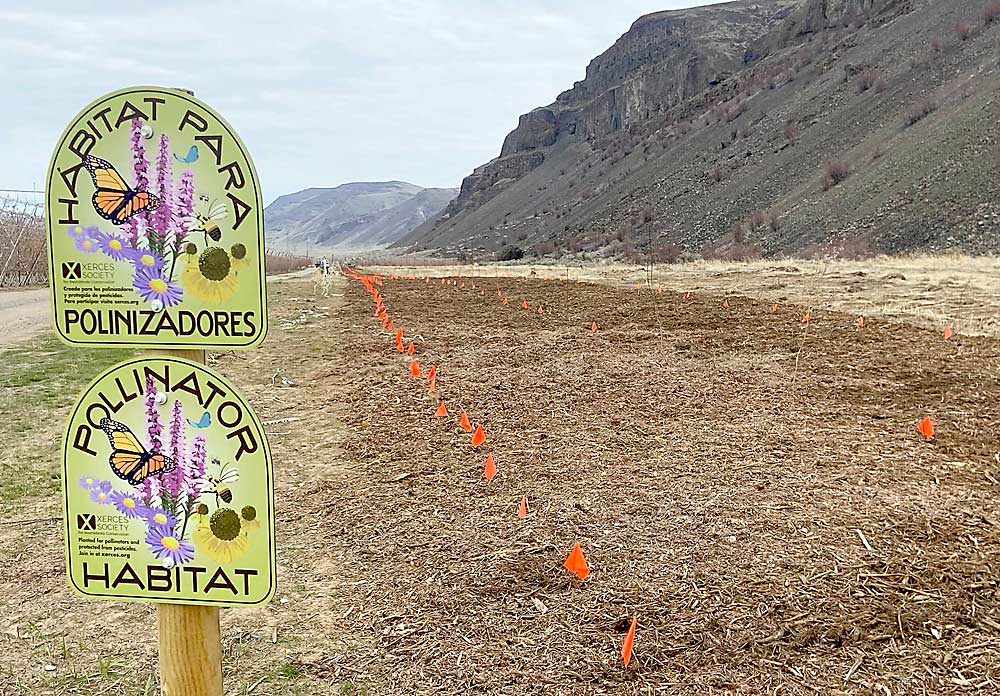
Help from growers
The flower gardens were already there. Funded by their own grants, a few growers over the years have seeded irrigation pond banks and other empty land near apple orchards to provide natural, year-round pollinator sanctuaries.
Zirkle Fruit Co. is one of those growers. With a grant from a partnership of the Xerces Society, Tree Top and General Mills, entomologist and pest consultant Teah Smith has planted roughly 200 acres of flower gardens on Zirkle farms throughout Central Washington.
Smith believes they are helping support bees, which in turn help pollinate the orchard. But she is even more convinced the plantings sustain populations of other beneficial insects.
It takes about three years for flower gardens to establish and insect populations to stabilize in them. After that time, she noticed her counts of ladybugs, lacewings and parasitoid wasps shoot up both in the flowers and feeding on pests such as woolly apple aphid in the neighboring orchards.
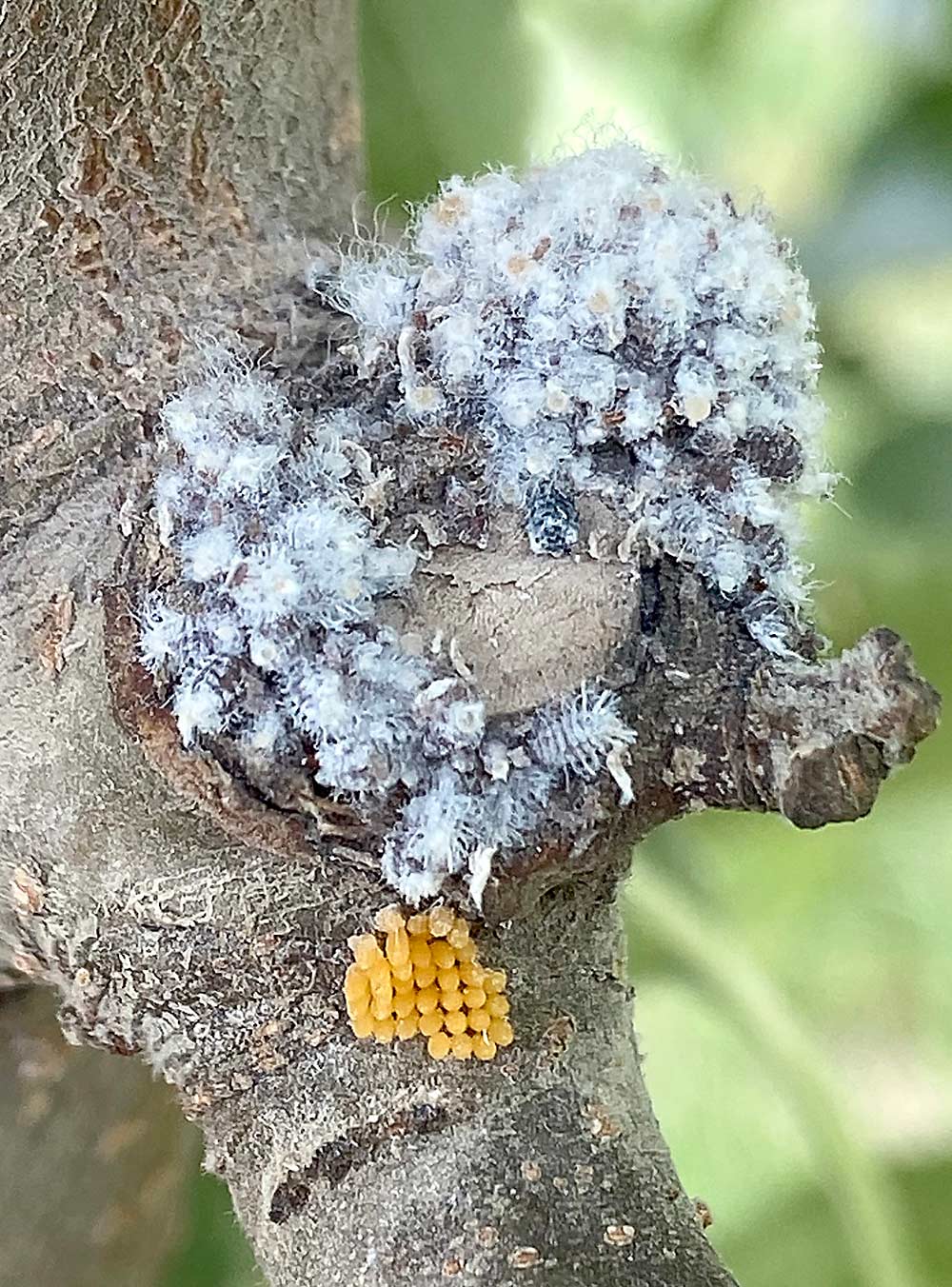
“I’ve never seen so many ladybugs,” said Smith, known for her beneficial insect release programs.
The results have made her want more flower gardens.
“That’s why I continue to do this, because I’ve actually seen it working for us,” she said.
Stemilt Growers has 400 acres of pollinator habitats alongside its orchards from Bridgeport to Pasco.
Some are there naturally; the company has high-elevation blocks on Stemilt Hill overlooking Wenatchee where native blooms grow wild.
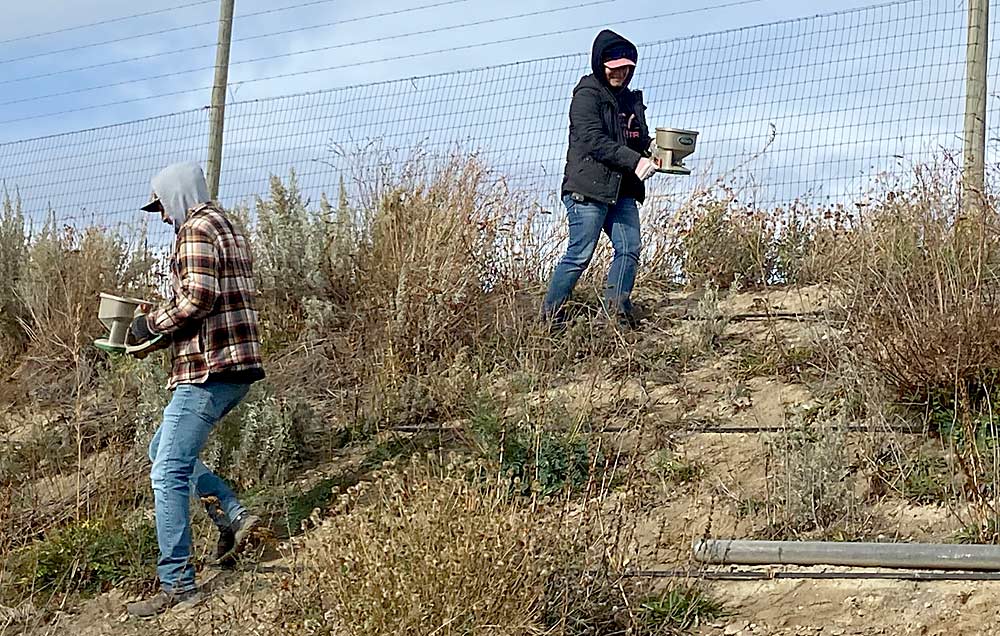
The company planted the rest, starting in 2018 with a few small trials. Dianna Sanchez, a technical support agronomist, led Stemilt in planting many more and entered the company in the Bee Friendly Farming certification program.
Anecdotally, she has witnessed the flowers attracting pollinators year-round.
“You can really see the bee activity and the different kinds of bees,” she said.
—by Ross Courtney

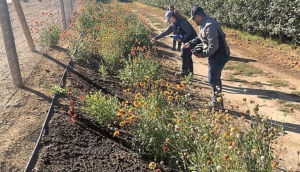





Leave A Comment